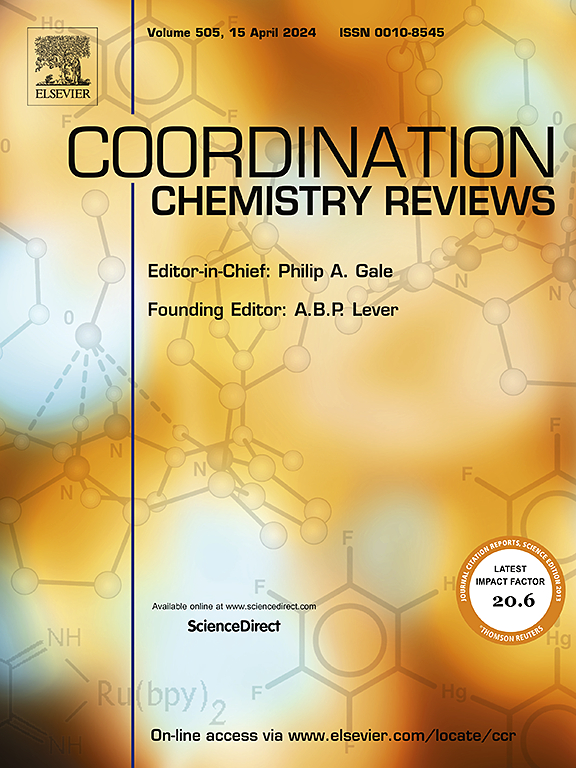Advancing water purification: The role of copper-carbon nanostructured heterojunctions in pollutant removal
IF 20.3
1区 化学
Q1 CHEMISTRY, INORGANIC & NUCLEAR
引用次数: 0
Abstract
Water pollution remains a pressing global challenge, driven by the unchecked release of industrial effluents and agricultural runoff that introduce a broad spectrum of organic and inorganic contaminants into aquatic systems. Among various remediation approaches, such as adsorption, filtration, catalytic oxidation, ion exchange, Fenton-like processes, and photocatalysis, the choice and composition of catalysts critically influence treatment efficiency and sustainability. In this context, copper–carbon nanohybrid heterojunctions (CCNHs) have emerged as promising materials, combining the redox activity of copper-based nanostructures with the high conductivity and surface area of carbonaceous materials. These hybrids enhance charge separation, reduce electron–hole recombination, and exhibit superior adsorption and catalytic properties. This review comprehensively examines recent progress in CCNH-based systems for water purification, focusing on synthesis techniques, heterojunction engineering, defect and surface modification, stabilization strategies, and underlying removal mechanisms. We also highlight advances in pilot-scale applications, discuss challenges such as metal leaching and long-term stability, and propose future directions towards practical deployment of CCNHs in sustainable wastewater treatment technologies.
推进水净化:铜碳纳米异质结在污染物去除中的作用
水污染仍然是一个紧迫的全球挑战,工业废水和农业径流的无节制排放将广泛的有机和无机污染物引入水生系统。在吸附、过滤、催化氧化、离子交换、类芬顿法和光催化等多种修复方法中,催化剂的选择和组成对处理效率和可持续性具有重要影响。在这种背景下,铜-碳纳米杂化异质结(CCNHs)已经成为一种有前途的材料,它将铜基纳米结构的氧化还原活性与碳质材料的高导电性和高表面积结合起来。这些杂化物增强了电荷分离,减少了电子-空穴复合,并表现出优异的吸附和催化性能。本文综述了近年来基于ccn的水净化系统的研究进展,重点介绍了合成技术、异质结工程、缺陷和表面改性、稳定策略以及潜在的去除机制。我们还强调了中试规模应用的进展,讨论了金属浸出和长期稳定性等挑战,并提出了在可持续废水处理技术中实际部署CCNHs的未来方向。
本文章由计算机程序翻译,如有差异,请以英文原文为准。
求助全文
约1分钟内获得全文
求助全文
来源期刊

Coordination Chemistry Reviews
化学-无机化学与核化学
CiteScore
34.30
自引率
5.30%
发文量
457
审稿时长
54 days
期刊介绍:
Coordination Chemistry Reviews offers rapid publication of review articles on current and significant topics in coordination chemistry, encompassing organometallic, supramolecular, theoretical, and bioinorganic chemistry. It also covers catalysis, materials chemistry, and metal-organic frameworks from a coordination chemistry perspective. Reviews summarize recent developments or discuss specific techniques, welcoming contributions from both established and emerging researchers.
The journal releases special issues on timely subjects, including those featuring contributions from specific regions or conferences. Occasional full-length book articles are also featured. Additionally, special volumes cover annual reviews of main group chemistry, transition metal group chemistry, and organometallic chemistry. These comprehensive reviews are vital resources for those engaged in coordination chemistry, further establishing Coordination Chemistry Reviews as a hub for insightful surveys in inorganic and physical inorganic chemistry.
 求助内容:
求助内容: 应助结果提醒方式:
应助结果提醒方式:


